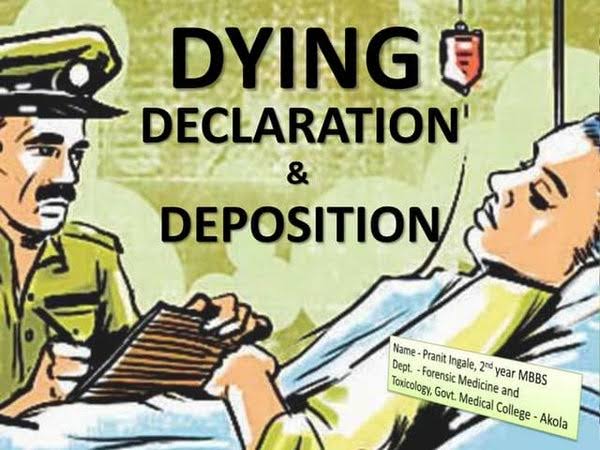@JUDGMENTTAG-ORDER
Tapen Sen, J.@mdashHeard Mr. Rajeev Sinha, learned counsel for the petitioner and Mr. Pradip Modi, learned G.P.I, for the respondents.
2. Whether the resolution/notification No. 6394 dated 23.10.1987 can be applied upon the petitioner is the moot question that has to be decided in this case.
3. According to the petitioners, by an order dated 9.7.1980 the Chief Engineer. National High Ways Project terminated the services of several employees including the petitioner and thereafter by order dated 4.4.1981 issued by the Chief Engineer, Public Works Department. National High Ways as contained at Annexure 2, the retrenched staff including the petitioner were taken back in service. The name of the husband of the Petitioner No. 1 (and father of the Petitioner No. 2), namely, Ajay Kumar Sinha''s name was mentioned at SI. No. 1 of running page 31 of this Writ Application.
4. On 5.4.1984 by Annexure 5 a letter was issued under the signature of the Joint Secretary, Road Construction Department, Government of Bihar, Patna addressed to the Accountant General, Bihar through the Department of Finance, wherein it was inter alia informed that pursuant to the demands raised by the PWD Mazdoor Union, it had been decided that work charged employees who had completed five years'' of continuous service should be regularly absorbed. Earlier the provisions appear to have been ten years'' of continuous service. It was further communicated that after 25.7.1995 all work charged employees who had completed a continuous period of five years'' satisfactory service, should be regularized and approval of the Department of Finance would be obtained. The petitioners have stated that on 22.10.1984, the Department of Finance approved the aforementioned decision communicated by letter dated 5.4.1984 and further observed that after 23.7.1975 no further work charged posts be sanctioned nor any vacant posts be filled up by work charged employees. The learned counsel for the petitioner has stated that subsequently, by a letter dated 10.7.1992, the Superintending Engineer wrote to the Chief Engineer recommending the case of the petitioner for regular absorption. However, inspite of the aforesaid recommendation, other persons whose names have been mentioned in Annexure 7 were regularized by letter dated 13.8.1992, but strangely, the name of the petitioner was left out and thereafter nothing happened and in the meantime, on 7.1.1991, the husband of the Petitioner No. 1 (and father of the Petitioner No. 2) died in harness.
5. Consequently, by annexure 8, the Petitioner No. 1 requested the Executive Engineer for compassionate appointment as also for other interrelated benefits.
6. According to the respondents, the main stand taken by them is to be found at paragraph 6 of the Counter Affidavit which says that Ajay Kumar Sinha (predecessor-in-interest of the petitioners) having not completed five years'' of continuous service on 21.10.1984 as per the resolution dated 23.10.1987 cannot claim regularization of service. Countering the aforementioned submissions, the learned counsel for the petitioner referring to Annexure 10 of the Supplementary Affidavit, submits that Clause 4 of the said resolution (Annexure 10) splits and categorises the conditions into two, viz. :--
(a) Persons appointed by the competent authority; and
(b) Those work charged employees who had completed a continuous period of five years till 21.10.1984.
7. According to the learned counsel for the petitioner, Late Ajay Kumar Sinha fell in the first category, i.e., he was appointed by a competent authority and that being the position, his case should not be confused with the second category, i.e., having to complete a continuous five years'' of service upto 21.10.1984.
8. Mr. Pradip Modi, learned G.P.I. has produced for perusal of this Court, the original resolution dated 23.10.1987 and has reacted sharply to the typed version brought on record vide Annexure 10 and has stated that in the original resolution in Clause 4 there is no such words as "anyatha vaise." On the contrary, according to him, the words appearing in Clause 4 is "anyatha yogya." Thus what Mr. Pradip Modi contends is that the typed version totally changes the case of the petitioner and in fact, what the correct version of the resolution stipulates is that a work charged employee who claims regularization should not only have been appointed by a competent authority but should have also completed a continuous service of five years till 21.10.1984.
9. The learned counsel for the petitioner submits that the aforesaid circular dated 23.10.1987 should not be read in Isolation of Annexure 11 which is a subsequent circular dated 20.9.1990 and Clause 5 therein lays down that only those work charged employees can be regularized, whose appointments had been made either on 21.10.1984 or prior to 21.10.1984 and therefore, upon reading Clause 5, the five years'' criteria becomes redundant. This Court under Article 226 has no intention of rendering otiose any of the provisions of the circulars issued by the Government. An- nexure 10 relied upon by the learned counsel for the petitioner is a typed version and it apparently has printed the words "anyatha vaise" which is not correct. The correct terminology used in the original is "anyatha yogya" and therefore, this Court is not inclined to agree with the learned counsel for the petitioner that Clause 4 contains a particular term under which and as a matter of right, the Government was bound to regularize.
10. This Court, therefore, does not have any inclination to embark upon giving a finding as to whether Late Ajay Kumar Sinha was entitled to as a matter of right under the aforesaid circulars or not. Another factor which is to be taken note of is that Late Ajay Kumar Sinha was a work charged employee. Mr. Pradip Modi has submitted that upon his death, the post ceased to exist. He has also relied upon a judgment of the Supreme Court in the case of
11. This Court is also of the opinion that if the petitioner relies exclusively on Annexure 10, then perhaps he does not have a case. However, what cannot be lost sight of Is that the husband of the Petitioner No. 1 was taken back in service In the year 1981 vide Annexure 2 and by Annexure 6/A a strong recommendation was made on 10.7.1992 in his favour for his regularization. He died in harness on 7.1.1999, In other words, the petitioner remained in a work charged status from 4.4.1981 to 7.1.1999, i.e., he rendered almost 19 (nineteen) years of service and therefore, it is not unreasonable on the part of these petitioners to legitimately expect that their husband/father should have been dealt with in a reasonable manner by his employers. The State is supposed to be a model employer and even after recommendations, the State should not have been absolutely silent on this issue and should not have kept the matter in a cold storage. With the death of Ajay Kumar Sinha on 7.1.1999 his family, which had become attuned to a particular life style on account of whatever salary or wages that he used to bring, became a "family without a lifeline." Such a situation should not have been allowed to be created.
12. In this context, the observations of the Apex Court at paragraph 15 of a judgment in the case of Jacob M., Puthuparambil v. Kerala Water Authority, reported in AIR 1990 SC 2228 becomes very significant. The Supreme Court observes that :--
"The family of the employee which has settled down and accommodated its needs to the emoluments received by the bread winner will face economic ruination if the job is suddenly taken away. Besides, the precious period of early life devoted in the service of the establishment will be wholly wasted and the incumbent may be rendered ''age barred'' for securing a job elsewhere. It is indeed unfair to use him, generate hope and a feeling of security in him, attune his family to live within his earnings and then suddenly to throw him out of job. Such behavious would be an affront to the concept of job security and would run counter to the constitutional philosophy, particularly the concept of right to work in Article 41 of the Constitution."
13. The State not only hired Ajay Kumar Sinha. On the contrary they used him and therefore definitely generated hope in him. Subsequently that hope should not have been snatched away by inaction on their part because inaction itself is an antithesis of reasonableness and runs counter to the great reasonableness clause enshrined under Article 14 of the Constitution. Here, we are also faced with a situation where the petitioners have complained that other persons who had not even completed five years of services up to the cut off date, were regularized.
14. Taking note of the aforementioned equitable aspects, this Court, although inclined to grant relief to the petitioners at the stage of Article 226 of the Constitution of India, does however, relegate the petitioners to the status of representationists and consequently, directs that they shall have the liberty to approach the concerned authorities for a compassionate consideration. If such a representation is filed, the same shall be considered on its own merits after taking into consideration the observations made above. Since much time has already lapsed, it is expected that the respondents will look into the matter with all expedition at their disposal.
15. With the aforesaid observations and directions, this Writ Application is disposed off.

